How To Get The Most Out Of Your Cyber Security Training
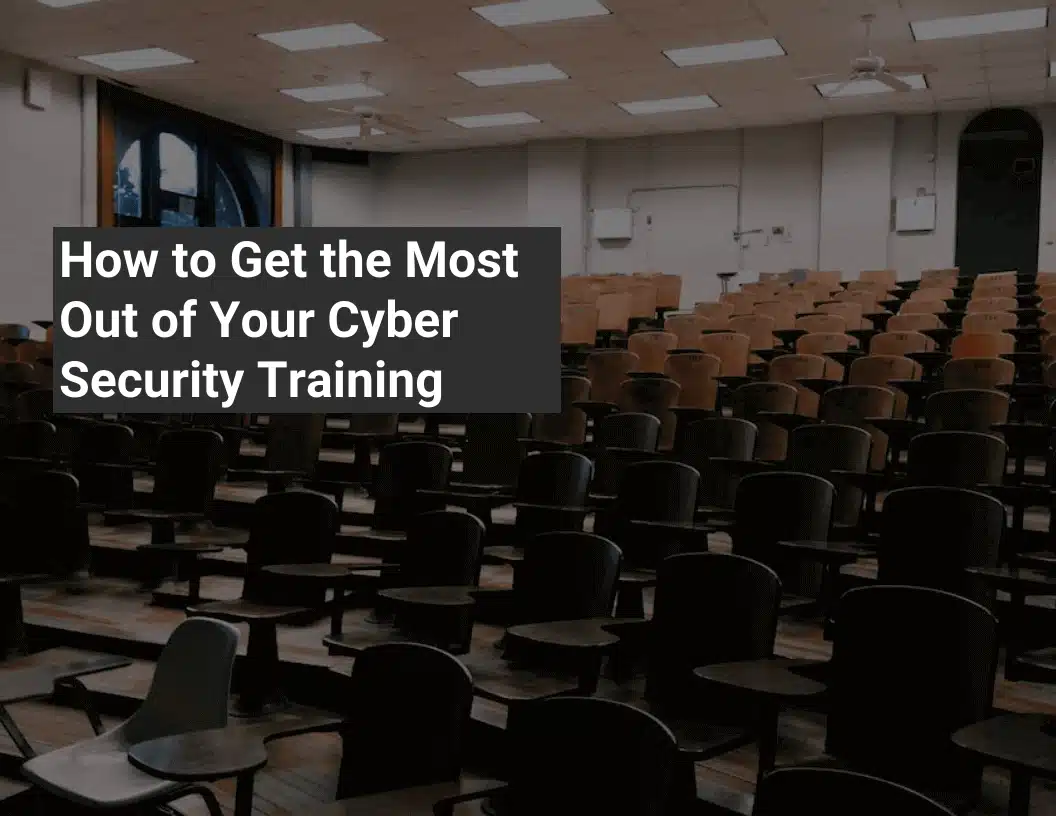
Does your business routinely undertake cyber security training?
We wish everyone could answer yes to that.
Unfortunately, that’s not the case. Too many businesses are failing to train their employees, or only training those who are directly involved in IT.
In this article, we’ll outline why you need to do cyber security training, and how to make the most of it.
Get Your Free Essential Eight Cyber Security Report
Learn:
-
- The cyber security gaps costing you time and money.
- Practical steps to upgrade your security measures.
- The hidden risks of poor security protocols.
- How to bolster your cyber security and aid business growth.
What Is Cyber Security Training?
Businesses use cyber security training to develop their employees’ knowledge, skills and competencies.
You’ve probably heard that cyber security is no longer the sole responsibility of the IT department.
And this is true.
Everyone has a duty to security, even if their roles don’t specifically state security responsibilities.
These responsibilities include:
- The protection and safeguarding of information
- Maintaining an effective cyber security posture by continuous monitoring
- Carrying out specific roles with regard to security responsibilities
However, if you’re the CIO or Director of a business the responsibility to train your employees falls on you.
If you’re short on time, here are a few best practices to consider when training your employees.
- Train all employees regularly or continually expose them to cyber security training material. This can be via emails, posters or cyber security alerts when they access certain systems.
- Run formal training sessions at least once per year and provide information regarding cyber security basics.
- Conduct job-specific cyber security training for employees who handle sensitive information.
Now that we know what cyber security training is, let’s take a look at why it is important for businesses.
Why Is Cyber Security Training Important?

That seems like a pretty good reason to us.
Cybercrime is certainly on the rise. There were 67,000 cybercrimes reported in Australia in 2021.
However, that’s estimated to be only one-fifth of the number of actual cyber crimes committed.
This presents a huge threat the Australian businesses. Failure to undertake cyber security training can put a business at significant risk.
Cyber security is as much a human issue as it is a technological one.
For this reason, it’s important for businesses to cultivate a culture where employee behaviours and responses to suspicious activity are automatic and consistent.
Let’s take a look at a few more reasons why cyber security training is essential for businesses.
Employee Responsibility & Accountability
Your employees are vital to the success of your business, but they also pose the biggest threat. Many cyber security breaches occur after an employee has accidentally allowed an attacker into the network.
Cyber security training can help you drive home the message that cyber security is everyone’s responsibility.
It’s also essential that your employees realise that they can be held accountable if they cause a significant data breach.
This is why it’s so important that everyone in the business is trained and motivated to comply with cyber security best practices.
A good way to go about this is by addressing the why’s of cyber security training. Such as:
- Why do we need to use strong passwords?
- Why do we double-check who an email is from?
- What can happen if we don’t do these things?
By doing so, you are stepping away from a do as I say or these are the rules approach.
Instead, you are giving employees a sense of ownership, duty and responsibility. This can be extremely beneficial in creating a strong cyber security culture.
We’ll touch on this more a little later.
Remote Work
Many challenges come with remote work and businesses must consider these when creating their workforce strategy. The home network is quickly becoming the corporate network. As a result, employers and employees need to consider cyber security in ways that they haven’t in the past.
Employees who work from home might have sensitive documents on their devices or printed out. These employees may also use unsecured WiFi in their homes or other locations.
So, it comes as no surprise that as work from home rises, so too does the use of increasingly sophisticated cyber attacks.
By conducting cyber security training you can decrease the likelihood that your remote employees will contribute to a cyber security breach.
If some of your employees are working remotely, check out below for some tips on how to operate securely.
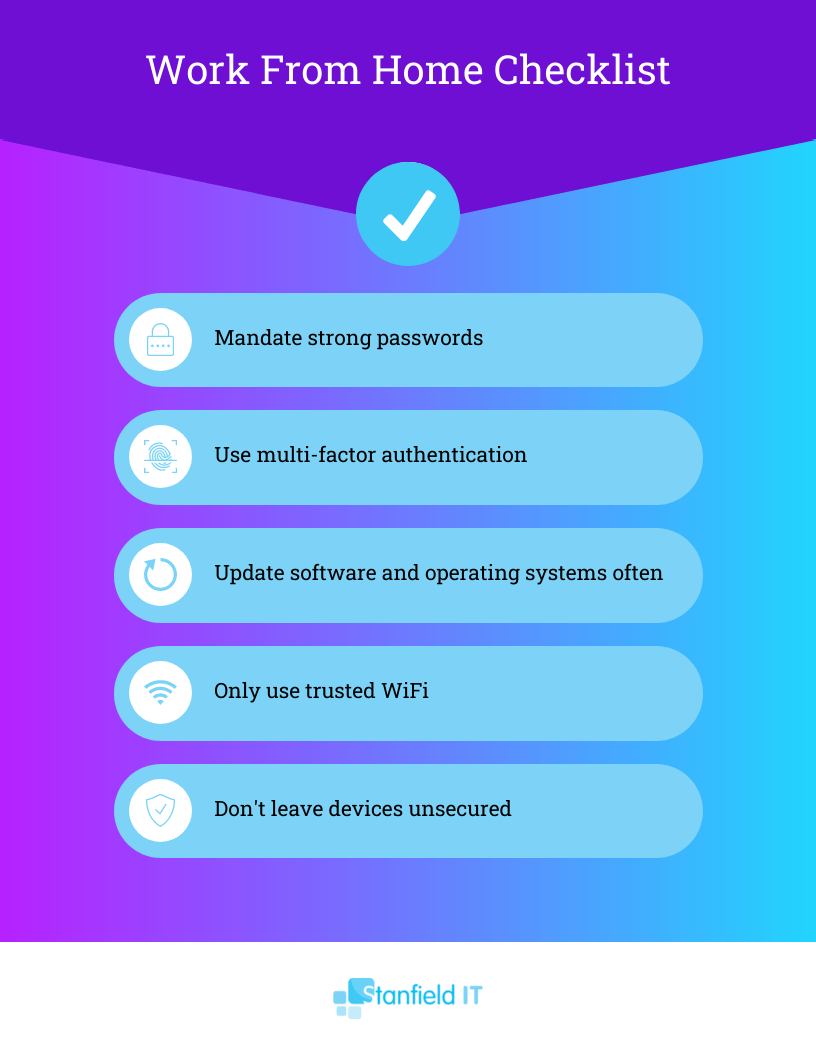
For more work-from-home cyber security tips, you can check out our extensive guide.
Compliance
Cyber security compliance can be tricky – especially if you own a small business.
Businesses must implement cyber security procedures that adhere to regulatory requirements, laws and relevant industry group protocols.
All in an effort to protect data.
But it’s important not to treat compliance as simply ticking some boxes.
By being compliant with cyber security requirements you are taking measures to promote the overall success of your business.
But what has this got to do with cyber security training?
‘All employees and relevant contractors must receive appropriate awareness education and training to do their job well and securely. They must receive regular updates in organisational policies and procedures when they are changed too, along with a good understanding of the applicable legislation that affects them in the role.’
ISO 27001 A.7.2.2 Information Security Awareness
Cyber security training has become a requirement under regulations such as ISO 27001. In order to comply with these regulations, businesses need to develop training programs so that employees understand their responsibilities.
Consumer Confidence
Consumers are becoming increasingly aware of the threat of cybercrime and the implications of a data breach. Due to this, they are having greater concerns about data security.
As a result, customers now expect security to be at the forefront of every business.
There really is no way around it. And with 46% of businesses suffering reputational damage following a breach, it’s not worth ignoring.
Obviously, if you lose consumer data you’re also likely to lose their trust.
Case study:
In 2013, Yahoo experienced the largest data breach in history.
All 3 billion of its accounts were hacked.
As a result, Yahoo was subject to intense scrutiny and criticism.
Not only because of the data breach – but also because of the way they handled the aftermath.
Simply put, Yahoo had an extremely negligent approach to cyber security.
Password resets were not mandatory, and overall communication regarding the event was slow.
This drove away many customers and wiped $350 million off their sale price in 2017.
Not good.
Hopefully, you never need this. But here are 5 rules to follow in the event of a data breach.
- Have a communication plan in place.
- Prioritise your customers. Communicate with them first.
- Involve senior leadership.
- Be transparent.
- Keep communicating.
Likewise, if the incident is having a significant impact on your asset you must also report it to the ACSC.
You can also create an incident response plan to share with your employees.
Now that you understand why cyber security training is essential for your business, let’s look at how you can get the most out of it.
How to Get the Most out of your Cyber Security Training
You need to deliver cyber security training strategically in order to have the greatest impact.
Here are a few ways to do that.
#1 Make it positive – Human Risk Management
Traditional cyber security training has a few pitfalls:
- There’s too much focus on ticking boxes.
- Training is not regular.
- Training is too generic – not all users are the same or in the same position.
- Outcomes aren’t measured.
- The importance of policies is overlooked.
Clearly, we require a new approach.
Enter Human Risk Management (HRM).
HRM represents a bit of a paradigm shift in cyber security.
Employees are often considered the biggest cyber security risk, and for the most part, this is true.
However, HRM focuses on portraying employees as the solution to cyber security threats, rather than the cause.
The idea is that in order to prevent cyber security incidents businesses should empower employees with the knowledge and tools they need to stay ahead of threats.
We touched on this a little earlier.
By training employees using positive and interesting cyber security messages you are encouraging them to adopt effective cyber security concepts.
They have skin in the game.
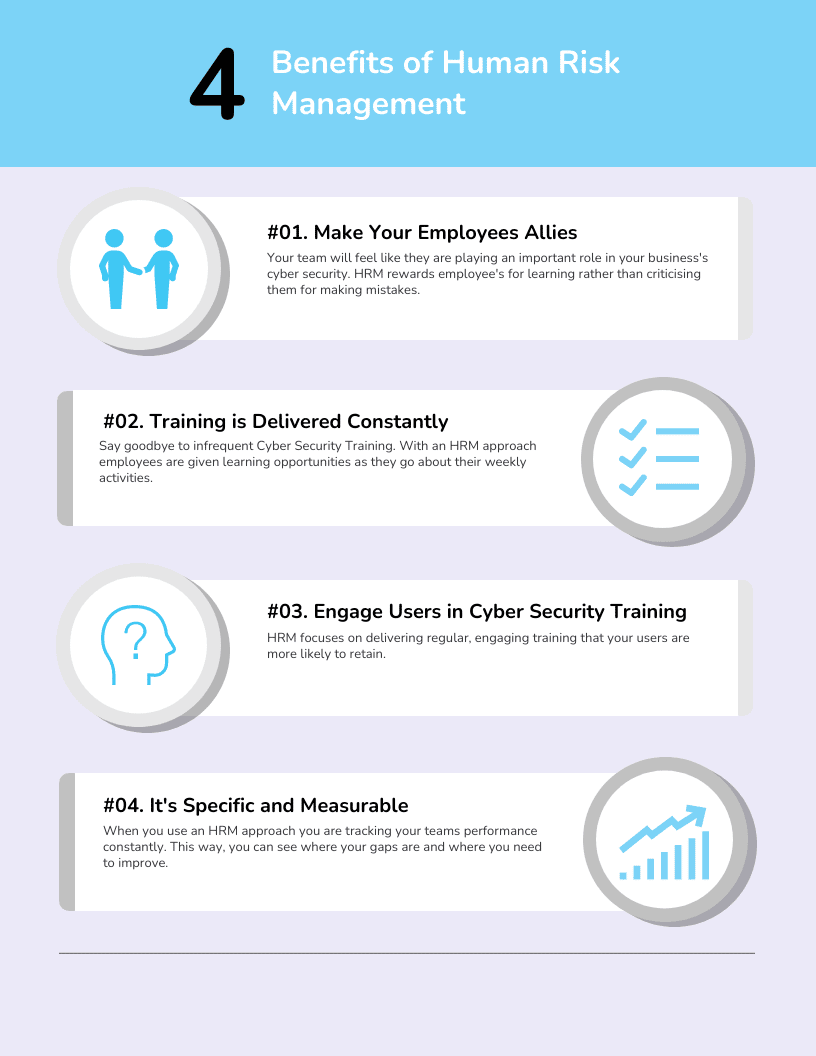
By taking an HRM approach you can deliver your cyber security training in one of the most effective ways possible.
#2 Make it relevant
Great cyber security training won’t go anywhere unless it addresses specific risks, threats, and incidents your business could face.
Take pishing for example.
Phishing & phishing simulations
The use of phishing is a major concern for business owners and is growing rapidly.
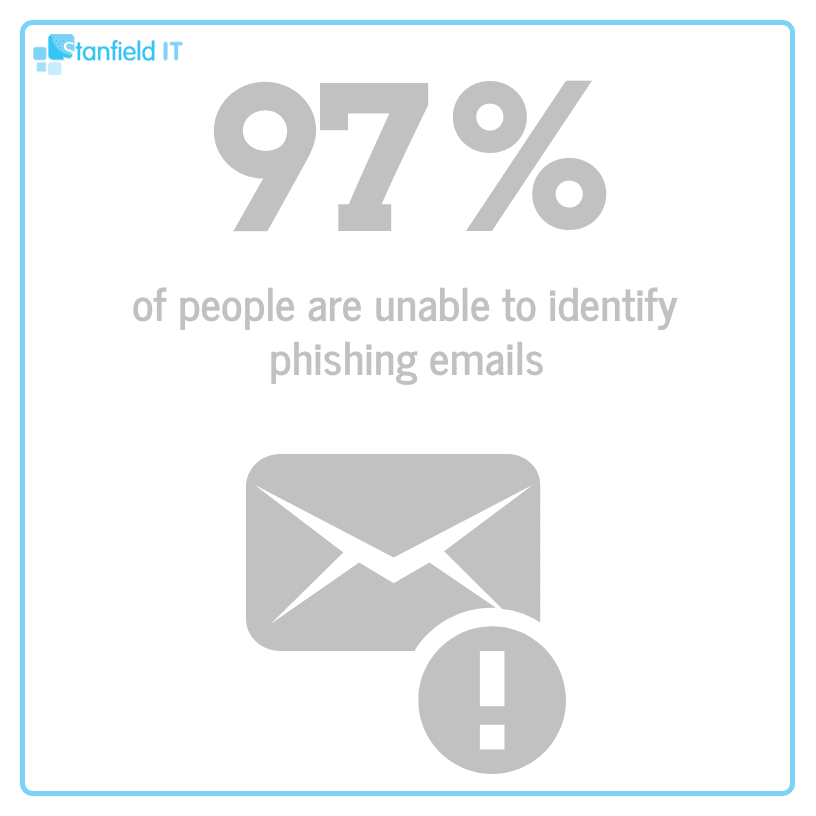
Phishing is when malicious actors send emails pretending to be from reputable companies.
Their purpose is to trick people into revealing personal or business-critical information. This can lead to a loss in revenue, reputation damage, and of course a widescale data breach.
It’s estimated that 3.4 billion phishing emails are sent out across the world each day.
It’s for this reason that phishing simulations are such an important part of cyber security training.
What is a phishing simulation?
A phishing simulation is an email designed to mimic a regular phishing email. However, it was not sent by real attackers.
By using phishing simulations businesses can get valuable insight into the behaviour of their employees.
This can include which users:
- Viewed
- Clicked
- Downloaded
- Replied
- Entered credentials
- Reported the email
This way employees are able to see that they are susceptible and can adjust their behaviour accordingly. This makes insight from phishing simulations an extremely useful educational tool for businesses and employees.
Here are a few tips to make the most of a phishing simulation.
1. Time it well
Don’t make the mistake of running a single test and moving on. To be most effective a phishing simulation should be delivered as a campaign – with a monthly or quarterly frequency.
In doing so, you’re able to get a more accurate understanding of user behaviours.
2. Use multiple methods
There are a number of different ways that phishing attempts are made.
These include:
- Phishing – Delivered en masse.
- Spear phishing – Targeted attempts that are sent to one person in the business.
- Whaling – Targeted at the big fish, the whales. Senior executives such as CEOs and Directors. Whaling attacks are usually more sophisticated because they deliver higher returns.
- Business Email Compromise (BEC) – Aimed at businesses that use electronic transfers. These scams also target high-profile employees. Once they’ve hacked the account they’re able to use social engineering techniques to request payments into their own accounts.
You should simulate these different phishing methods at separate times. This will increase employee awareness and lead to a greater overall understanding of the risks.
3. Educate
Remember, the purpose of phishing simulations is to educate yourself and your employees – not to punish or embarrass those who fall for them.
Keep in mind the principles of HRM.
You want to encourage your employees and create an environment where it’s okay to make mistakes so that people can learn from them.
Phishing is just one example of the many different types of cyber attacks. However, given its prominence, it’s important to include it in your cyber security training.
#3 Make it regular
The frequency of your cyber security training is vital. If you’re only delivering training once every few years then you are wasting time and money.
Let’s take a look at a study.
Employees undertook cyber security training – specifically on how to identify and avoid phishing attempts.
For the following 4 months, users were shown to effectively make a distinction between phishing attempts and safe emails.
However, this was no longer the case only 6 months after receiving the training.
This highlights the importance of frequent training.
Cyber security threats are constantly evolving. If you’re not doing the same with your training, you could be at risk of falling victim to an attack.
Here are some tips on how to frequently engage employees with their cyber security training.
Discuss cyber security in a monthly meeting
This is a great way to ensure that everyone is on the same page. You can discuss emerging trends and technologies, incidents, and if there are any security considerations regarding new clients.
“Tip of the week” campaigns
Sending an email each week with a cyber security tip can raise awareness around cyber security.
e.g.
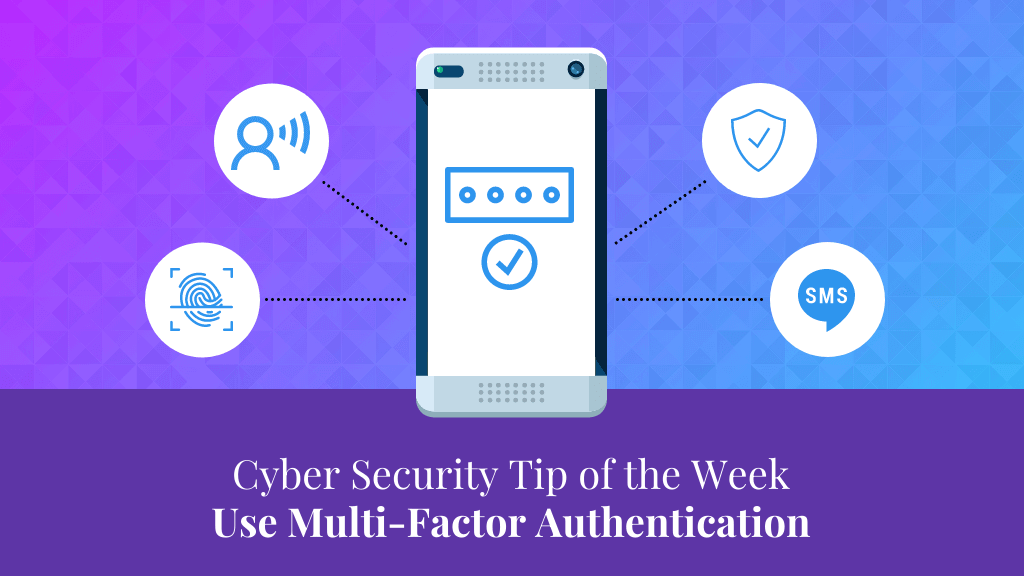
Take part in Cyber Security Awareness Month
Introduced in 2004, Cyber Security Awareness Month helps businesses protect themselves from online threats.
Each October, businesses are encouraged to undertake a variety of activities and learning opportunities to boost their cyber security awareness.
This can be a great time to engage a cyber security professional to discuss cyber security at your business.
This leads us to our final tip on how to get the most out of your cyber security training.
#4 Talk to the experts
Engaging an external cyber security professional comes with plenty of benefits.
There are a few options available, let’s run through a couple.
usecure
usecure is a comprehensive platform that delivers cyber security training as a service.
The platform uses HRM to help you build a cyber aware workforce, and identify and close employee knowledge gaps.
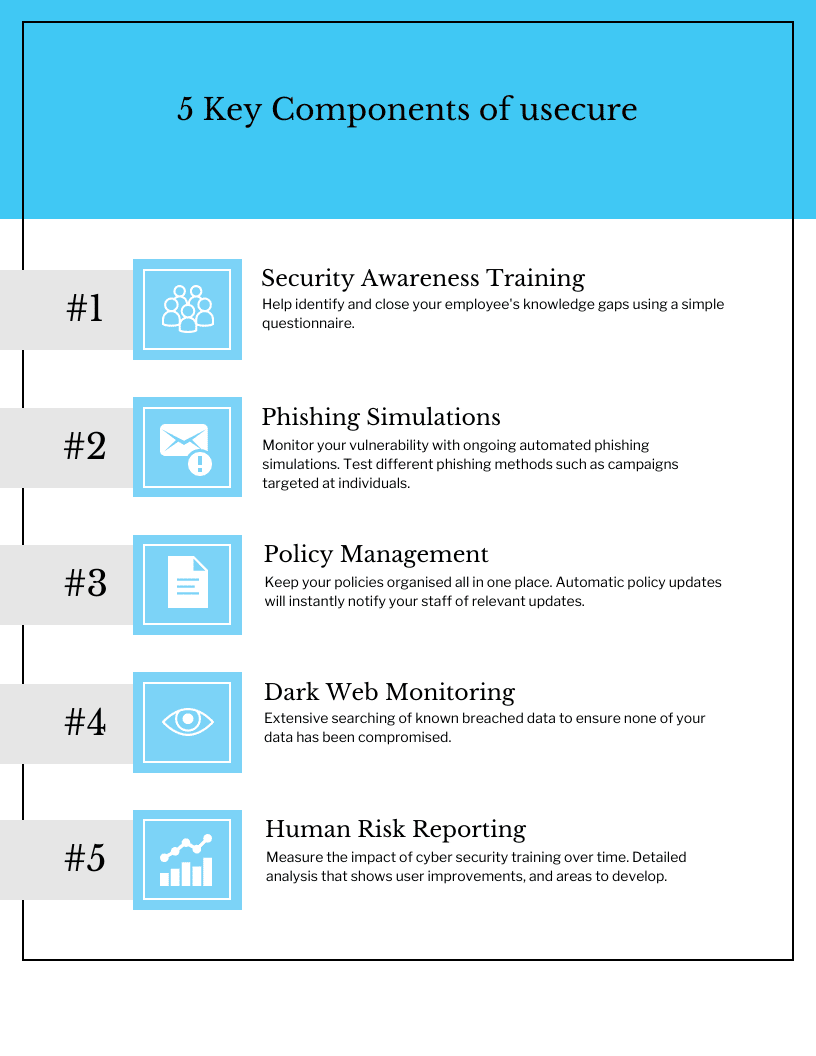
Managed Service Provider
Using a Managed Service Provider (MSP) is another great way to look after all of your cyber security needs.
This can include auditing, monitoring and maintenance, and of course training.
Advantages of using an MSP for cyber security training:
Save on expenses
Creating your own cyber security training program is a significant investment. There are costs associated with designing, implementing and maintaining the program.
You can easily avoid this by engaging an MSP who already has one set up.
Industry expertise
When engaging an MSP you are getting expert training from an industry professional.
You will receive the most up-to-date cyber security training based on relevant industry threats and trends.
Conclusion
Cyber Security Training is an essential consideration for any business.
If you’re not regularly training your employees, you might be leaving gaps in your cyber security defences.
Luckily, with the right help, effective cyber security training is something you can easily implement and these tips should help.
Finally, if you need any help with your cyber security training, then speak to our team.